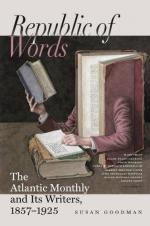This theory has been propounded by the Rev. John Hunter, in one of his “Critical and Historical Tracts."[5] Mr. Hunter admits that Robin Hood “lives only as a hero of song”; that he is not found in authentic contemporary chronicles; and that, when we find him mentioned in history, “the information was derived from the ballads, and is not independent of them or correlative with them.” While making these admissions, he accords a considerable degree of credibility to the ballads, and particularly to the “Lytell Geste,” the last two fits of which he regards as giving a tolerably accurate account of real occurrences.
In this part of the story King Edward is represented as coming to Nottingham to take Robin Hood. He traverses Lancashire and a part of Yorkshire, and finds his forests nearly stripped of their deer, but can get no trace of the author of these extensive depredations. At last, by the advice of one of his foresters, assuming with several of his knights the dress of a monk, he proceeds from Nottingham to Sherwood, and there soon encounters the object of his search. He submits to plunder as a matter of course, and then announces himself as a messenger sent to invite Robin Hood to the royal presence. The outlaw receives this message with great respect. There is no man in the world, he says, whom he loves so much as his king. The monk is invited to remain and dine; and after the repast an exhibition of archery is ordered, in which a bad shot is to be punished by a buffet from the hand of the chieftain. Robin, having himself once failed of the mark, requests the monk to administer the penalty. He receives a staggering blow, which rouses his suspicions, recognizes the king on an attentive




